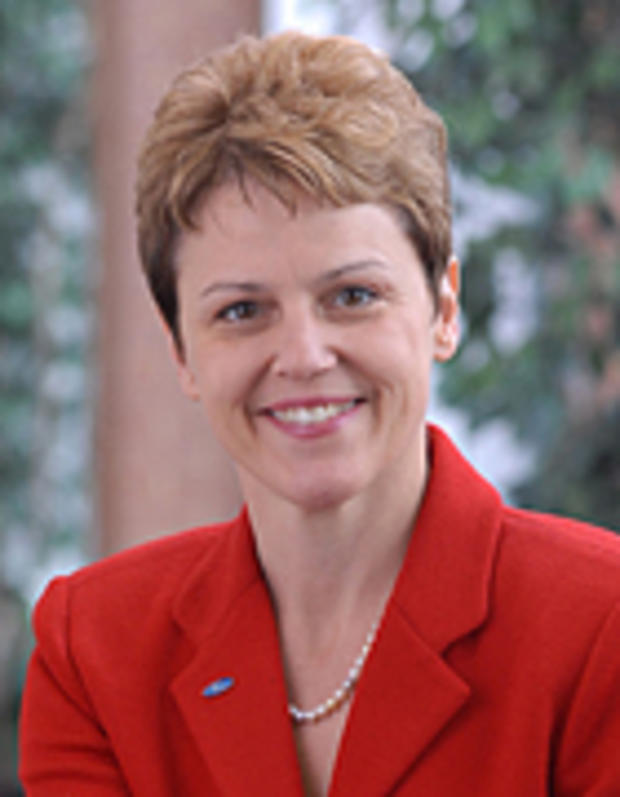You’ve climbed the ranks as an engineer, and in past roles you’ve
been very hands-on with technology and R&D. What are you focusing on
now?
Now it’s really looking at what we can do globally
with our product plan and how we can work with governments, utilities and
partners to bring electrification forward, to deliver affordable,
fuel-efficient vehicles.
There are lots of parts to this plan, including converting
factories, bringing new vehicles to the U.S., increasing hybrid production,
introducing our EcoBoost technology (the company’s most advanced
engine), and continuing our work on developing electric and plug-in vehicles.
How do you get your team to deliver? What’s your approach?
It’s a lot of coaching and participation. It’s
not like I sit in a room and say, “here’s our vision.”
It’s a collaborative process. I try very hard to continuously learn,
be open to new ideas, step back, and reflect. I know I am not the expert on
just about anything — but my people are, so I bring in the right
people.
The other trait that people often tell me I have is
tremendous courage. I refer to it as stupidity half the time, because it doesn’t
even occur to me to think I’m being brave. It’s as simple
as just challenging assumptions: We’ve always done it this way. Well
why? Is that going to work in this part of the business? Are we sure? How do we
know? Being an effective leader means taking on what others may see as
political or hierarchical issues. We all run into barriers or boundaries. The
question is how to raise the issue in a way that gets us focused on the problem,
and not on attacking individuals.
What’s an example of when you took on a contentious issue?
I had to fight for SmartGuage with EcoGuide (an instrument
panel that graphs fuel use in real time). When we saw it, I said, “Oh,
my God. Can I have that on the hybrid? As a matter of fact, why don’t
we pilot that on the Ford Fusion hybrid, and in the process we’ll
learn a lot that will help the rest of the company.” I thought that,
from a customer viewpoint, it would be one of the “I love my car, I
love my car, I love my car” elements. It was going to add a few
million dollars to the cost of the program, and,
at the time, marketing wasn’t sure it would add any revenue, or that
the customer would really value it.
So how did you get the green light?
We took senior leadership through it, and I said: “We’re
not asking for you to approve it; just don’t kill it. Give us this
much time to come back with a reasonable business case and value proposition.”
Sometimes making something work is not getting everyone to agree. It’s
breaking it down to the salami slice of life; If you try to eat the whole
salami at once, you get sick.
So we worked and worked at it. We found ways to reduce the
memory size, the microprocessor speeds, all sorts of things to get the cost
down. Every Friday at 7:30 a.m. I met with the team to ask, ‘Where
are you on delivering the function? The cost? What barriers do you have? What
help do you need?’ It was just a touch point every week, to assure it
didn’t get caught up in something that would kill it.
You’ve been at Ford almost three decades. How has the culture
changed?
It has changed enormously. When I joined 26 years ago it was
far more hierarchical, very much divisions doing the best they could to run the
business. To me, the most significant change in the last five to eight years
has been what I would call far more collaborative, cross-functional delivery.
Please explain
Ford, from its original history, was a group of companies,
created around the world, that were all part of Ford Motor Company, but they
were regional businesses. Today one part of the company is leading electrified
transportation. [The business] needs a leader and everybody else supports that,
compared to 10-15 years ago when each region would have its own strategy.
The biggest example of this [new collaboration] is our
global manufacturing platform. The C-platform happens to work with the Transit
Connect Van, the Focus and the C-Max (mini-van). Others in the future will come
off of the same platform. It’s very much a recognition of what I
would call “who has the baton?” We’re supporting
the relay by making sure everybody is prepared for the race.
